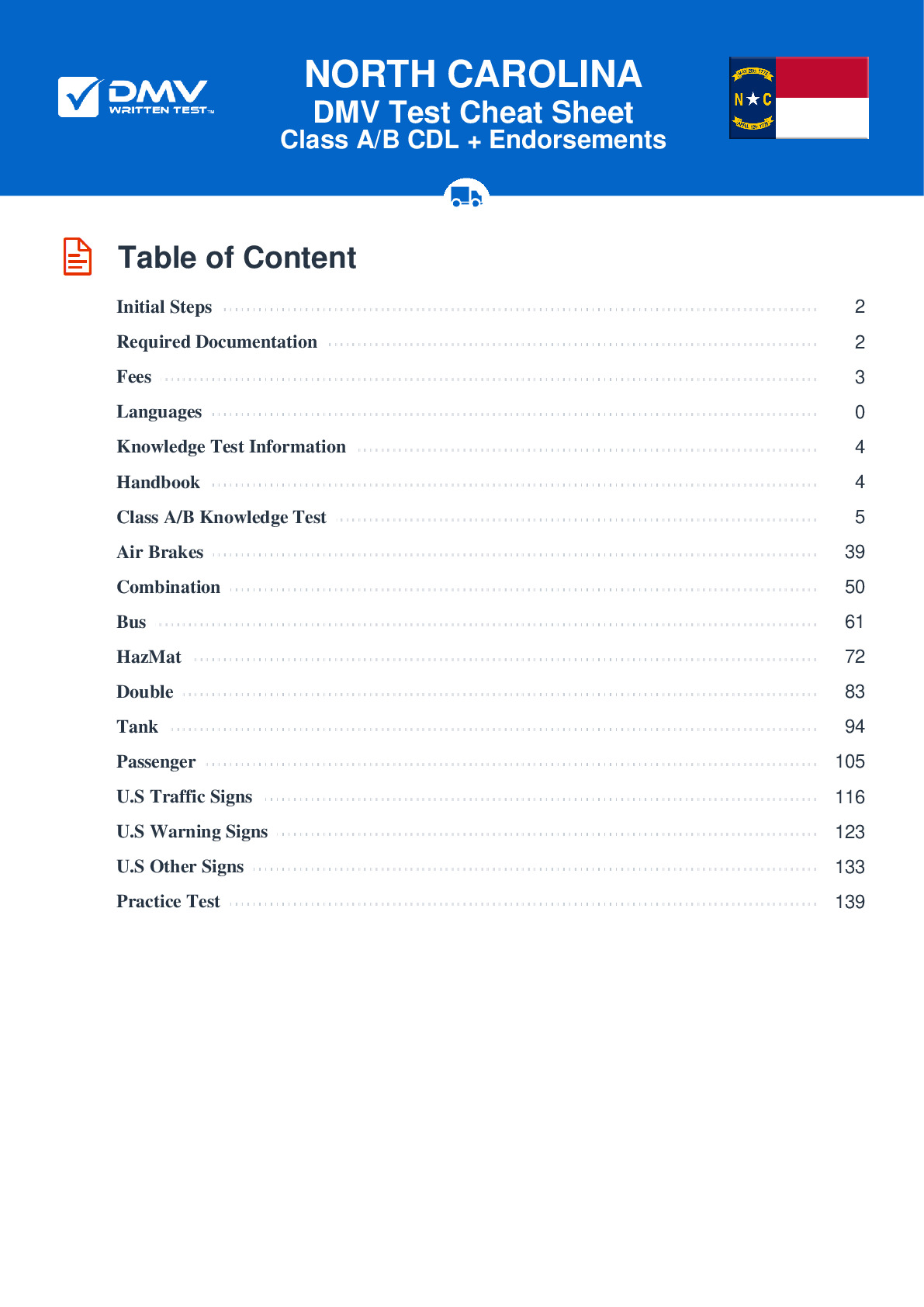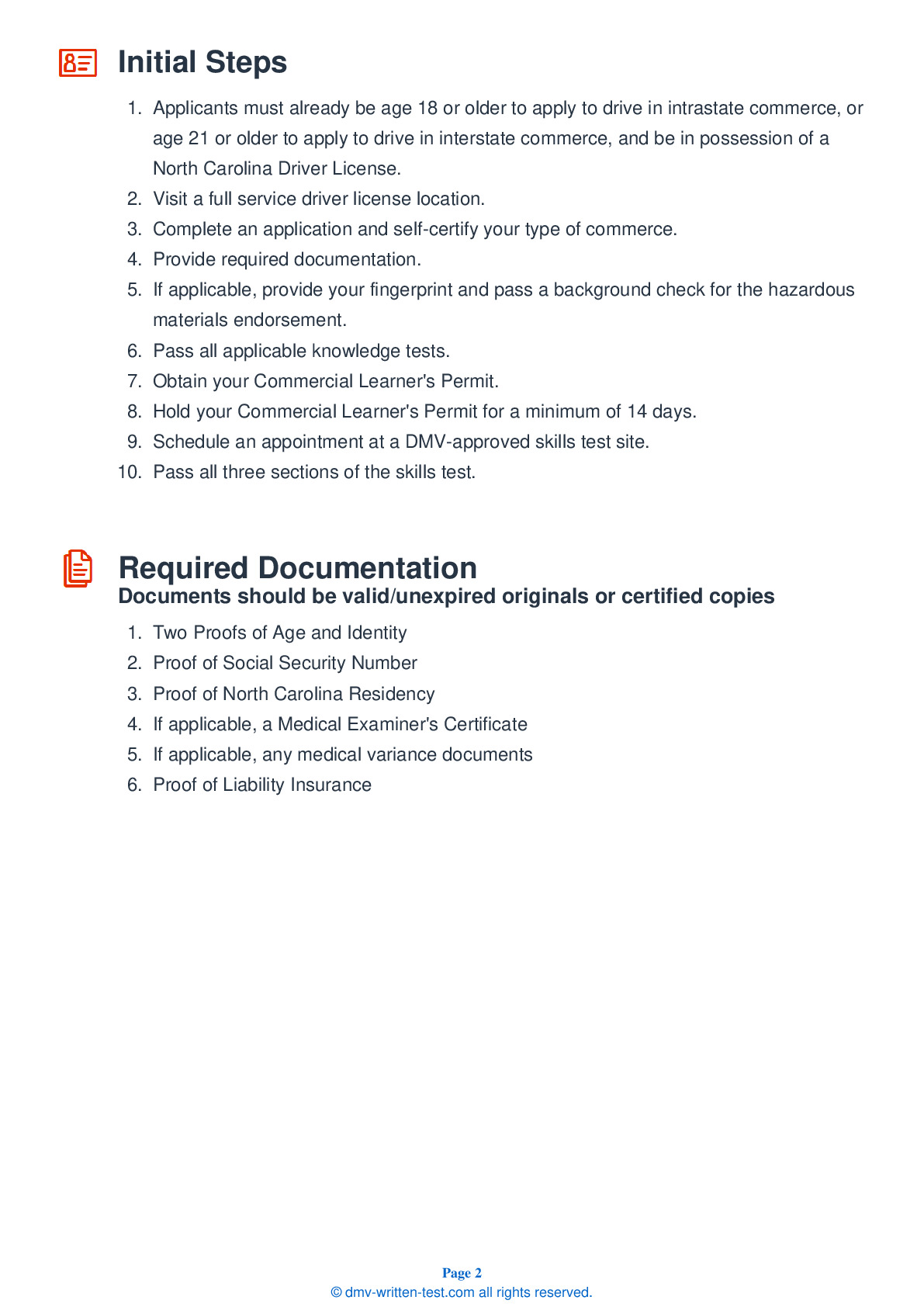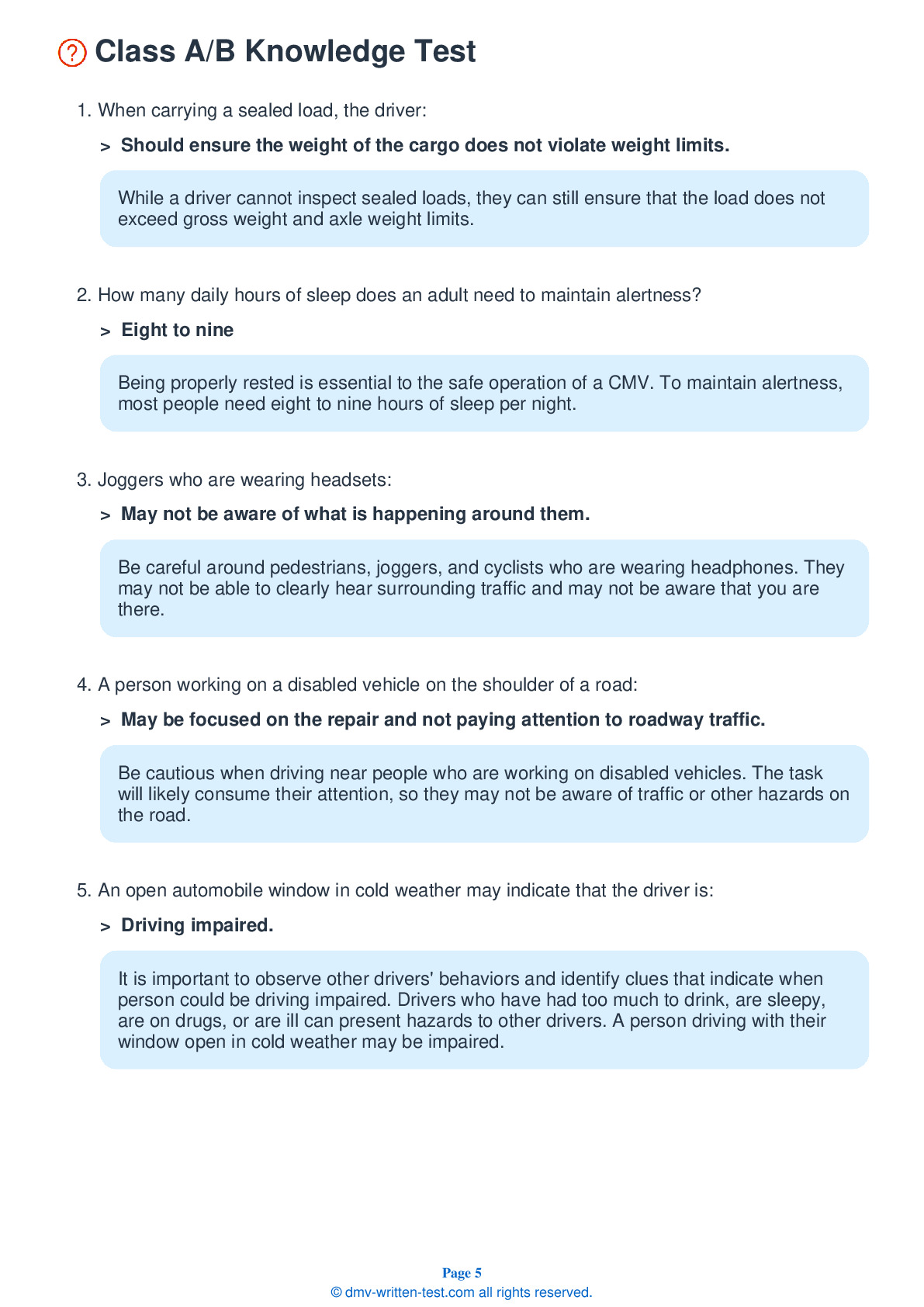Air Brakes
This endorsement is required for driving a vehicle with air brakes. To receive this endorsement, applicants must pass a written test. The test consists of 25 multiple choice questions. Each question has three or four answer choices. To pass, the applicant must answer at least 20 questions correctly. Test questions come from the North Carolina Commercial Driver License Manual. Questions come from the chapter covering: Air Brakes. The Air Brakes endorsement may be used with the Class A, B or C CDL.
Number of Question
Passing Score
1. When a brake pedal is pressed and the S-cam is turned, the S-cam:
Explanation
When a brake pedal is pressed and the S-cam is turned, the S-cam presses the brake shoes against the inside of the brake drum. This causes friction and will cause the vehicle to slow.
2. What do air brakes use to make the brakes work?
Explanation
Many large CMVs are equipped with air brakes. An air braking system uses compressed air to operate.
3. ____ make up the emergency brake system.
Explanation
In an air brake system, there are three different braking systems: a service brake system, a parking brake system, and an emergency brake system. The emergency brake system uses parts of both the parking and service brake systems.
4. What can happen if the air pressure gets too low in an air brake system?
Explanation
Pressing and releasing the brake pedal unnecessarily can let air out of the braking system faster than the compressor can replace it. Air brakes may cease to work effectively if the pressure becomes too low.
5. On trucks and buses, where are ABS malfunction lamps located?
Explanation
Tractors, trucks, and buses with Anti-Lock Braking Systems (ABS) have yellow malfunction lamps located on their instrument panels. Trailers have yellow ABS malfunction lamps on their left side, either on the front or rear corner.
6. During an applied leakage test, the maximum leakage rate for a single vehicle with air brakes is:
Explanation




